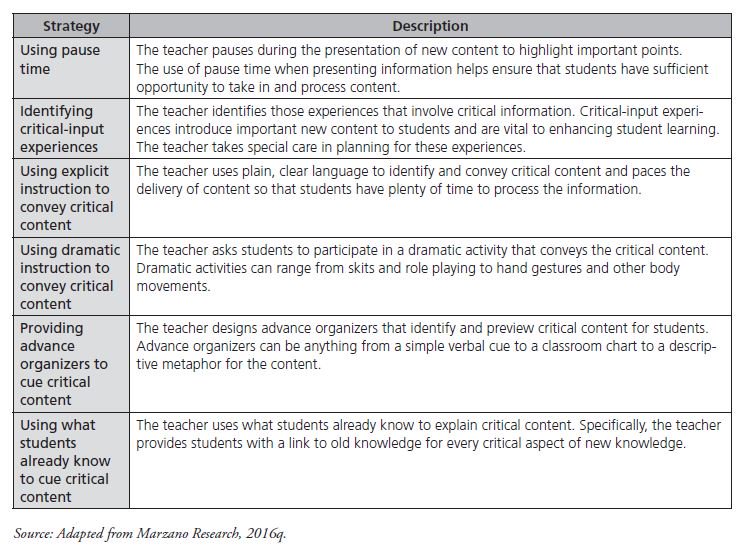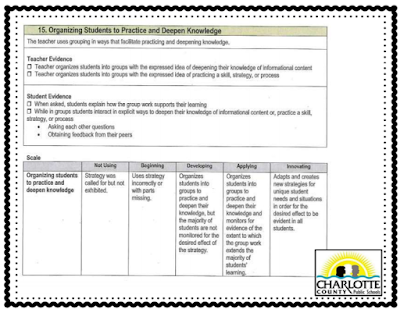Good morning to all,
Dr. Robert Marzano and his research team have proven dedication to determine the best methods to reach optimal student learning. However, even Dr. Marzano himself states, "....to counteract the incorrect belief that research could ever produce a list of instructional strategies that could guarantee student learning" (Marzano 2009b). No single instructional strategy can be used in isolation to garner student learning. "These items work in concert or sets to produce positive results" (Marzano, 2017).

The above image shows the elements that fall under the Domain Question 2 set, which identify methods that will help students interact with new knowledge. Although only three of these elements; Identifying Critical Content, Helping Students Record and Represent Knowledge, and Helping Students Reflect on Learning are on current evaluations all of these items are important steps in helping students understand their learning. A master teacher will develop and refine these elements within instruction and will be able to implement the strategy, monitor students for the desired results, and adapt the approach so that it is effective with all students.
This week focus will be upon Element #6 Identifying Critical Information
This is simply the teacher pointing what is important and what is less important. The need for this strategy arises from students being bombarded with all types of information and not all of this information is equally important, Element 6 assists students with paying attention to the most important content. There are 11 strategies below that can be used to highlight critical information.


There are 5 questions from the book, "Identifying Critical Content - Classroom Techniques to Help Students Know What is Important" that should be considered when building lesson plans.
1. How can you begin to incorporate some aspect of this strategy in your instruction?
2. How can you signal to students which content is critical versus non-critical?
3. How could you monitor the extent to which students attend to critical content?
4. What are some ways you can adapt and create techniques for identifying critical information and address unique student needs and situation?
5. What are you learning about your students as you adapt and create new techniques?
If you would like to read more from this book, please use the following link.https://www.learningsciences.com/media/catalog/product/i/c/icc_lookinside.pdf
Thank you all for the Character Parade on Friday, we are looking forward to this week's activities. Please check the Master Calendar for school events.
Have a great week,
James and Adrienne





